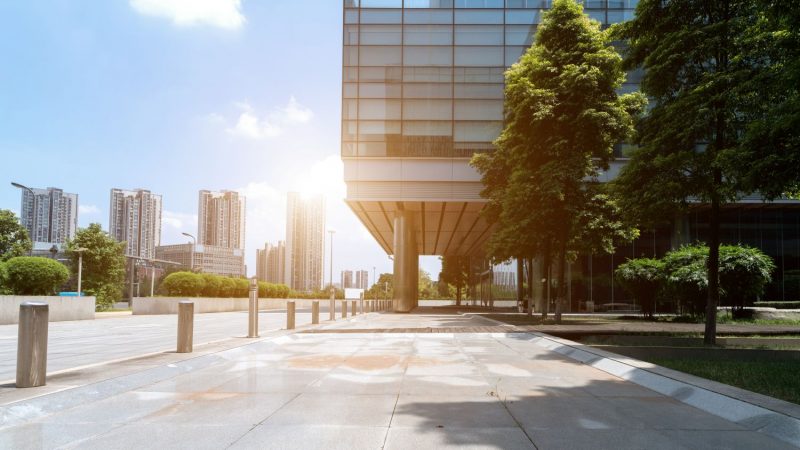When businesses think about energy efficiency, the first things that come to mind are usually LED lighting, HVAC upgrades, or solar panels. But there’s another powerful, cost-effective strategy that often gets overlooked: landscaping.
According to the U.S. Department of Energy (DOE):
“Understanding your climate zone can help you determine the best energy-saving landscaping strategies for your building. A well-designed landscape not only adds value to your property but also reduces heating and cooling costs. Carefully positioned trees can reduce energy use by up to 25%.”
DOE – Energy Efficient Landscaping
Why Landscaping Matters for Commercial Buildings
For large facilities, energy use for heating and cooling can make up a significant portion of utility bills. Landscaping provides natural solutions that:
- Create Shade – Reducing solar heat gain on building exteriors, roofs, and parking lots.
- Act as Windbreaks – Minimizing cold drafts in winter, lowering heating demand.
- Improve Comfort – Enhancing outdoor spaces for employees, tenants, and visitors while lowering urban heat island effects.
The result? Lower operating costs, increased occupant comfort, and stronger alignment with sustainability goals.
Climate and Microclimate Considerations
The DOE highlights two important factors when planning energy-efficient landscaping:
- Regional Climate – The U.S. has four main zones: Temperate, Hot-Arid, Hot-Humid, and Cool Regions. Each requires different strategies for planting and design.
- Microclimate – The immediate surroundings of your building: sun exposure, shade patterns, wind flow, and moisture levels. For example, office buildings in dense urban areas may experience more heat retention, while industrial parks may face stronger winds.
By understanding both, facility managers and property developers can design landscaping that directly supports their building’s energy strategy.
Examples of Energy-Saving Landscaping for Businesses
Shade Trees in Parking Lots: Reduce heat buildup, making HVAC systems work less when employees or customers enter the building.
Green Roofs & Living Walls: Provide insulation and cut cooling loads, while also boosting aesthetics and brand image.
Strategic Tree Placement: Planting deciduous trees on the south and west sides provides summer shade but allows winter sunlight for passive heating.
Windbreak Hedges or Evergreen Rows: Reduce wind chill near large commercial or industrial buildings.
Take the First Step
By working with your local climate conditions and using DOE-recommended strategies, businesses can reduce utility costs, improve sustainability performance, and enhance property value.
You can explore tailored strategies for your region by visiting the DOE’s Energy Efficient Landscaping guide:
DOE – Energy Efficient Landscaping




